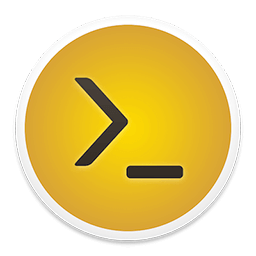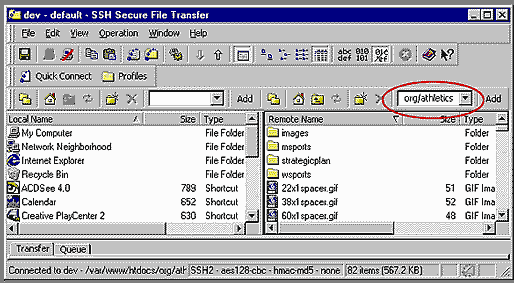

It prevents careless use of what is, after all, a secure session on an important asset. For me, this is a feature, and a good one. The app also requires the user to “thumb” in on each launch, and it will not switch back and forth between foreground and background. Truthfully, that is a minor point, and as long as the user is reasonably proficient with gestures and the iPad/iOS environment, I would say this is every bit as good as most of the ssh clients, and it has a great price with good support. This app is just a little too creaky in the user settings area for me to be able to work the way I need to. But I am no kind of iPad power-user the gesture I have mastered is not one the iPad responds too (alas). There are a couple of cases where I have to use it to correct something that jumbled the display, and it has always come through for me. That said…this is my “backup” ssh client.
#Ssh shell mac for free
You can try all features for free for a limited time.įirstly, this a solid app that absolutely delivers what it should, a full-fledged ssh session on the iPad. Please note that some features require a paid upgrade. Connection history with optional realtime location data.Keep connections alive while the app is in the background.Agent forwarding (OpenSSH servers only).Import an existing private key, or create a new key and export the public key. Choose your favorite from the several themes included or make your own. Select a URL to easily open it in the web browser.Long-press on text to show the selection controls. You can opt-out of this functionality by invoking /usr/bin/ssh directly.

We authenticate normally using /usr/bin/ssh, and bootstrap the remote shell to work with Warp Blocks and the Input Editor. Familiar iOS text selection experience. We create a wrapper (around /usr/bin/ssh) to setup the shell for Warp's feature set.Works with custom iOS keyboards such as SwiftKey.Easily bind custom actions to buttons on the keyboard toolbar.Connect directly from the iOS home screen. Save user credentials and configure a remote command such as ‘screen -rd’ to connect with one tap.Any keypress or action can be attached to any gesture.

Just swipe to switch channels or to scroll up and down. Works great with programs such as 'screen' and 'irssi'.Robust terminal emulation based on the PuTTY engine.And it keeps getting better every few weeks or months.SSH client designed for usability and performance. (It's possible Terminal does some of the things I mention here-it's been so long since I've used it that I don't recall, but when I switched I paid close attention to the differences and there were lots of advantages to iTerm. I've been using it for years now and have never missed Terminal. Development is pretty active, but documentation seems to lag behind. Some are mentioned here but some are not, such as co-processes, triggers,smart selection, semantic history, and so on. paste history (a good complement to the shells' command histories)Īnd a lot more.a full-screen view (and you can choose from either its own or OS X's built-in full-screen mode I greatly prefer iTerm's own full-screen mode, since it doesn't force you to move to a new 'Space', thus allowing Command-Tab to still work properly).Terminal-level auto-completion (I don't use this feature so I can't detail how it has advantages over shell-level autocompletion: especially if you use the fish shell or zsh, then it may not be better).Special provision for integrating with tmux (an alternative to GNU screen, and which most people regard as better & faster than screen).From here, you’re free to paste your SSH key to wherever it needs to go. Press Enter, and your public key will copy to your clipboard. Enter the pbcopy < command with the correct file path, for example: pbcopy < /.ssh/idecdsa.pub. Split panes (the sort of thing you can do in GNU screen or tmux, but at the level of the terminal emulator rather than in a program running on the server) To copy your public SSH key to the clipboard, follow these steps: Launch Terminal.Support for 256 colors (you'll never go back to 16 colors after using 256).While the original iTerm had a tabbed interface before Terminal did, iTerm 2 again eclipses Terminal by adding: The best GUI application for SSH (and everything else you can do on the command line) is iTerm 2.


 0 kommentar(er)
0 kommentar(er)
